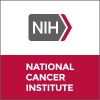
Multi-modular Chimeric Antigen Receptor Targeting GD2 in Neuroblastoma
NeuroblastomaMAGNETO is a single-centre, non-randomised, open label Phase I clinical trial of an Advanced Therapy Investigational Medicinal Product (ATIMP) in children and teenagers aged 1-16 years with relapsed or refractory neuroblastoma. The study will assess the feasibility of generating the ATIMP (GD2 CAR T cells) and the safety of administering the ATIMP in patients with relapsed or refractory neuroblastoma.

Collecting and Storing Tissue From Young Patients With Cancer
Acute Lymphoblastic LeukemiaAcute Myeloid Leukemia12 moreThis laboratory study is collecting and storing tissue, blood, and bone marrow samples from young patients with cancer. Collecting and storing samples of tissue, blood, and bone marrow from patients with cancer to study in the laboratory may help doctors learn more about changes that may occur in DNA and identify biomarkers related to cancer.

MIBG for Refractory Neuroblastoma and Pheochromocytoma
Relapsed NeuroblastomaMetastatic PheochromocytomaThis is a best available therapy/compassionate use single institution study designed to determine the palliative benefit and toxicity of 131I-MIBG in patients with progressive neuroblastoma and metastatic pheochromocytoma who are not eligible for therapies of higher priority. Patients may receive a range of doses depending on stem cell availability and tumor involvement of bone marrow. Response rate, toxicity, and time to progression and death will be evaluated.

Testing a New Immune Cell Therapy, GD2-Targeted Modified T-cells (GD2CART), in Children, Adolescents,...
NeuroblastomaOsteosarcomaThis phase I trial investigates the side effects and determines the best dose of an immune cell therapy called GD2CART, as well as how well it works in treating patients with osteosarcoma or neuroblastoma that has come back (relapsed) or does not respond to treatment (refractory). T cells are infection fighting blood cells that can kill tumor cells. The T cells given in this trial will come from the patient and will have a new gene put in them that makes them able to recognize GD2, a protein on the surface of tumor cells. These GD2-specific T cells may help the body's immune system identify and kill GD2 positive tumor cells.

Testing the Combination of Two Immunotherapy Drugs (Magrolimab and Dinutuximab) in Patients With...
High Risk NeuroblastomaRecurrent Neuroblastoma3 moreThis phase I trial is to find out the best dose, possible benefits and/or side effects of magrolimab in combination with dinutuximab in treating patients with neuroblastoma that has come back (relapsed) or does not respond to treatment (refractory) or relapsed osteosarcoma. Magrolimab and dinutuximab are monoclonal antibodies that may interfere with the ability of tumor cells to grow and spread. The combination of magrolimab and dinutuximab may shrink or stabilize relapsed or refractory neuroblastoma or relapsed osteosarcoma. In addition, this trial may help researchers find out if it is safe to give magrolimab and dinutuximab after surgery to remove tumors from the lungs.

Anti-GD2 4th Generation CART Cells Targeting Refractory and/or Recurrent Neuroblastoma
NeuroblastomaEffects of ImmunotherapyPatients with refractory and/or recurrent neuroblastoma have poor prognosis despite complex multimodel therapy and therefore, novel approaches are urgently needed. The investigators are attempt to treat this disease using T cells genetically modified with a 4th generation lentiviral chimeric antigen receptor (CAR) targeting GD2 (4SCAR-GD2). The 4SCAR-GD2-modified T cells can recognize and kill neuroblastoma through the recognition of GD2, a surface protein expressed at high levels on neuroblastoma but not on normal tissues. This study will evaluate the side effects and effective doses of 4SCAR-GD2 T cells in treating refractory and/or recurrent neuroblastoma.

Dynamic Whole Body Positron Emission Tomography/Computed Tomography Imaging
Neuroendocrine TumorsProstate Cancer4 moreQuantitative parameters obtained with dynamic whole body imaging using positron emission tomography (PET) can provide additional and complementary information to standard PET. Dynamic imaging allows for better understanding of the behavior of the radio-pharmaceutical because it can be followed over time. Thought to be difficult to perform with currently available clinical equipment that can affect the clinical workflow, it has recently shown to be feasible. We want to test the feasibility of this imaging technique and evaluate its utility in identifying lesions with three different radio-pharmaceuticals as compared to standard static PET. This study will also determine the clinical impact of DWB PET on participant management by comparing the overall qualitative assessment performed by nuclear medicine physicians between the standard PET images and the DWB ones.

Prospective Comprehensive Molecular Analysis of Endocrine Neoplasms
Endocrine TumorsThyroid Neoplasms3 moreBackground: Endocrine neoplasms (tumors) are among the fastest growing tumors in incidence in the United States. Furthermore, it is often difficult to distinguish between benign or malignant tumors in cancers of the thyroid, parathyroid, adrenal gland, and pancreas. More research is needed to improve detection and treatment options for patients who develop these kinds of cancer. Researchers are interested in studying the molecular changes that are involved in endocrine cancer development and growth. To collect a sample of tumor specimens and healthy tissue for further study, researchers are specifically looking for samples from patients who are scheduled for surgery or biopsy on endocrine tumors. Objectives: - To collect samples of precancerous, cancerous, and healthy tissue from individuals who are scheduled for surgery or biopsy of endocrine system tumors. Eligibility: - Individuals who have a tumor in or around their thyroid, parathyroid, adrenal gland, pancreas, or any neuroendocrine tissue, and are scheduled for surgery at the National Institutes of Health Clinical Center. Design: Participants in this study will provide blood and urine samples prior to surgery. During the surgery or biopsy, pieces of the tumor or precancerous growth and pieces of normal tissue near to the tumor will be removed for ongoing and future research. The rest of the tumor or growth will be sent for analysis. After surgery, participants will receive routine care until discharge, and doctors will discuss possible treatment options. If there is an appropriate NIH protocol, participants may choose to be treated at the NIH. After discharge, participants will return to the clinic for a routine postoperative check about 6 weeks following the operation, and then may be followed yearly at the Clinical Center or by phone....

Neuroblastoma Biology Study
NeuroblastomaMedical scientists want to find better ways to treat neuroblastoma and to find ways to prevent the tumor from growing back. To do this, they need more information about the characteristics of neuroblastoma cells. Therefore, they want to study samples of neuroblastoma tissues and neuroblastoma and normal cells in the blood and bone marrow that may be related to the growth of neuroblastoma cells. Doctors and other medical scientists also want to find better ways to detect and measure neuroblastoma to improve the ability to follow the response of tumor cells to therapy.

Biomarkers in Tumor Tissue Samples From Patients With Newly Diagnosed Neuroblastoma or Ganglioneuroblastoma...
GanglioneuroblastomaLocalized Resectable Neuroblastoma4 moreThis research trial studies biomarkers in tumor tissue samples from patients with newly diagnosed neuroblastoma or ganglioneuroblastoma. Studying samples of tumor tissue from patients with cancer in the laboratory may help doctors identify and learn more about biomarkers related to cancer.
